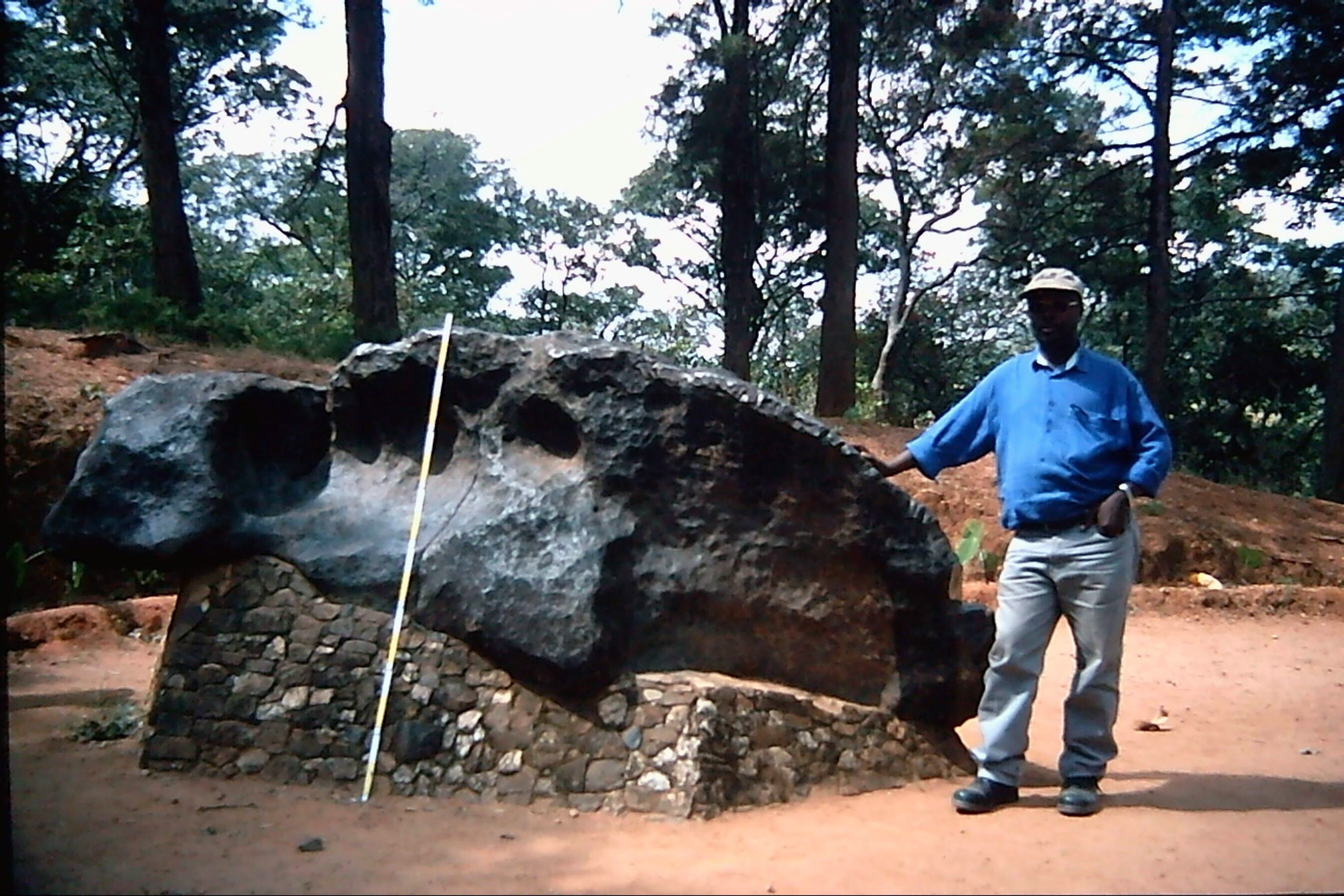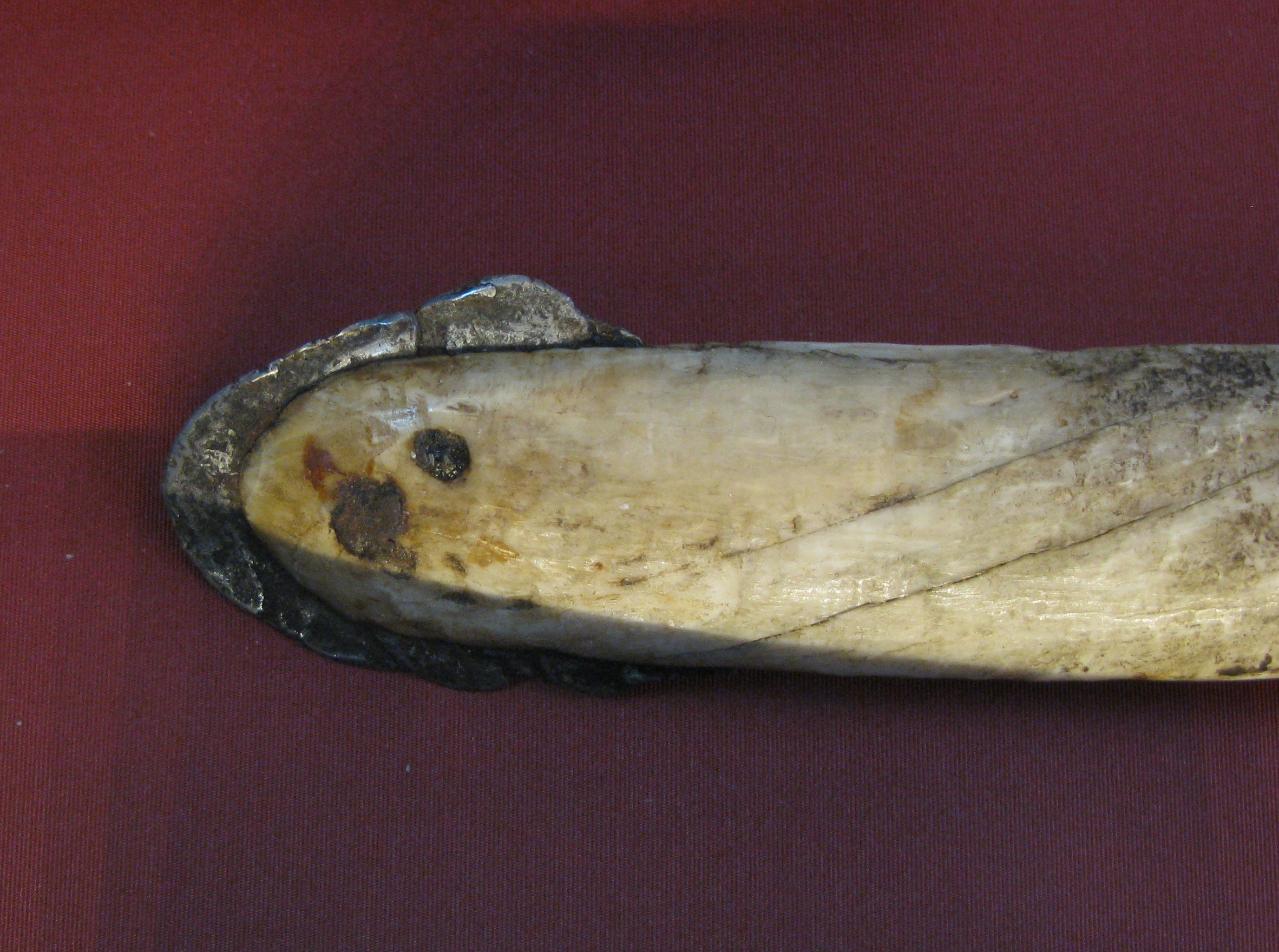|
Mbozi Meteorite
Mbozi is an ungrouped iron meteorite found in Tanzania. It is one of the world's largest meteorites, variously estimated as the fourth-largest to the eighth-largest, it is located near the city of Mbeya in Tanzania's southern highlands. The meteorite is long, high, and weighs an estimated . Discovery and naming Mbozi has been long known to locals, who call it ''kimondo'', yet became known to outsiders only in the 1930s. It is named after Mbozi District, in Mbeya (Tanzania). When it was discovered by scientists in 1930 it didn't have a crater. Mineralogy Mbozi consists of |
Meteoric Iron
Meteoric iron, sometimes meteoritic iron, is a native metal and early-universe protoplanetary-disk remnant found in meteorites and made from the elements iron and nickel, mainly in the form of the mineral phases kamacite and taenite. Meteoric iron makes up the bulk of iron meteorites but is also found in other meteorites. Apart from minor amounts of telluric iron, meteoric iron is the only naturally occurring native metal of the element iron (in metallic form rather than in an ore) on the Earth's surface. Mineralogy The bulk of meteoric iron consists of taenite and kamacite. Taenite is a face-centered cubic and kamacite a body-centered cubic iron-nickel alloy. Meteoric iron can be distinguished from telluric iron by its microstructure and perhaps by its chemical composition also, since meteoritic iron contains more nickel and less carbon. Trace amounts of gallium and germanium in meteoric iron can be used to distinguish different meteorite types. The meteoric iron in stony iron ... [...More Info...] [...Related Items...] OR: [Wikipedia] [Google] [Baidu] |
Gallium
Gallium is a chemical element with the symbol Ga and atomic number 31. Discovered by French chemist Paul-Émile Lecoq de Boisbaudran in 1875, Gallium is in group 13 of the periodic table and is similar to the other metals of the group (aluminium, indium, and thallium). Elemental gallium is a soft, silvery metal in standard temperature and pressure. In its liquid state, it becomes silvery white. If too much force is applied, the gallium may fracture conchoidally. Since its discovery in 1875, gallium has widely been used to make alloys with low melting points. It is also used in semiconductors, as a dopant in semiconductor substrates. The melting point of gallium is used as a temperature reference point. Gallium alloys are used in thermometers as a non-toxic and environmentally friendly alternative to mercury, and can withstand higher temperatures than mercury. An even lower melting point of , well below the freezing point of water, is claimed for the alloy galinstan (62–� ... [...More Info...] [...Related Items...] OR: [Wikipedia] [Google] [Baidu] |
Quartz
Quartz is a hard, crystalline mineral composed of silica (silicon dioxide). The atoms are linked in a continuous framework of SiO4 silicon-oxygen tetrahedra, with each oxygen being shared between two tetrahedra, giving an overall chemical formula of SiO2. Quartz is the second most abundant mineral in Earth's continental crust, behind feldspar. Quartz exists in two forms, the normal α-quartz and the high-temperature β-quartz, both of which are chiral. The transformation from α-quartz to β-quartz takes place abruptly at . Since the transformation is accompanied by a significant change in volume, it can easily induce microfracturing of ceramics or rocks passing through this temperature threshold. There are many different varieties of quartz, several of which are classified as gemstones. Since antiquity, varieties of quartz have been the most commonly used minerals in the making of jewelry and hardstone carvings, especially in Eurasia. Quartz is the mineral defining the val ... [...More Info...] [...Related Items...] OR: [Wikipedia] [Google] [Baidu] |
Plagioclase
Plagioclase is a series of tectosilicate (framework silicate) minerals within the feldspar group. Rather than referring to a particular mineral with a specific chemical composition, plagioclase is a continuous solid solution series, more properly known as the plagioclase feldspar series. This was first shown by the German mineralogist Johann Friedrich Christian Hessel (1796–1872) in 1826. The series ranges from albite to anorthite endmembers (with respective compositions NaAlSi3O8 to CaAl2Si2O8), where sodium and calcium atoms can substitute for each other in the mineral's crystal lattice structure. Plagioclase in hand samples is often identified by its polysynthetic crystal twinning or 'record-groove' effect. Plagioclase is a major constituent mineral in the Earth's crust, and is consequently an important diagnostic tool in petrology for identifying the composition, origin and evolution of igneous rocks. Plagioclase is also a major constituent of rock in the highlan ... [...More Info...] [...Related Items...] OR: [Wikipedia] [Google] [Baidu] |
Pyroxene
The pyroxenes (commonly abbreviated to ''Px'') are a group of important rock-forming inosilicate minerals found in many igneous and metamorphic rocks. Pyroxenes have the general formula , where X represents calcium (Ca), sodium (Na), iron (Fe II) or magnesium (Mg) and more rarely zinc, manganese or lithium, and Y represents ions of smaller size, such as chromium (Cr), aluminium (Al), magnesium (Mg), cobalt (Co), manganese (Mn), scandium (Sc), titanium Titanium is a chemical element with the symbol Ti and atomic number 22. Found in nature only as an oxide, it can be reduced to produce a lustrous transition metal with a silver color, low density, and high strength, resistant to corrosion in ... (Ti), vanadium (V) or even iron (Fe II) or (Fe III). Although aluminium substitutes extensively for silicon in silicates such as feldspars and amphiboles, the substitution occurs only to a limited extent in most pyroxenes. They share a common structure consisting of single chains of si ... [...More Info...] [...Related Items...] OR: [Wikipedia] [Google] [Baidu] |
Thin Section
In optical mineralogy and petrography, a thin section (or petrographic thin section) is a thin slice of a rock or mineral sample, prepared in a laboratory, for use with a polarizing petrographic microscope, electron microscope and electron microprobe. A thin sliver of rock is cut from the sample with a diamond saw and ground optically flat. It is then mounted on a glass slide and then ground smooth using progressively finer abrasive grit until the sample is only 30 μm thick. The method uses the Michel-Lévy interference colour chart to determine thickness, typically using quartz as the thickness gauge because it is one of the most abundant minerals. When placed between two polarizing filters set at right angles to each other, the optical properties of the minerals in the thin section alter the colour and intensity of the light as seen by the viewer. As different minerals have different optical properties, most rock forming minerals can be easily identified. Plagioclase for ... [...More Info...] [...Related Items...] OR: [Wikipedia] [Google] [Baidu] |
Toshiko Mayeda
Toshiko K. Mayeda (née Kuki) (1923–13 February 2004) was a Japanese American chemist who worked at the Enrico Fermi Institute in the University of Chicago. She worked on climate science and meteorites from 1958 to 2004. Early life and education Toshiko Mayeda was born in Tacoma, Washington. She grew up in Yokkaichi, Mie, and Osaka. When the United States entered World War II after the Japanese attack on Pearl Harbor, she and her father Matsusaburo Kuki were sent to the Tule Lake War Relocation Center. Whilst there she met her future husband, Harry Mayeda. After the war, she graduated with a bachelor's degree in Chemistry from the University of Chicago in 1949. Research Mayeda worked initially as a laboratory assistant to Harold Urey at the University of Chicago, where she was hired initially to wash glassware. They used mass spectrometry to measure oxygen isotopes in the shells of marine molluscs which gave information on the prehistoric temperatures of ocean waters and h ... [...More Info...] [...Related Items...] OR: [Wikipedia] [Google] [Baidu] |
Pallasite
The pallasites are a class of stony–iron meteorite. Structure and composition It consists of centimetre-sized olivine crystals of peridot quality in an iron-nickel matrix. Coarser metal areas develop Widmanstätten patterns upon etching. Minor constituents are schreibersite, troilite, chromite, pyroxenes, and phosphates (whitlockite, stanfieldite, farringtonite, and merrillite). Classification and subgroups Using the oxygen isotopic composition, meteoric iron composition and silicate composition pallasites are divided into 4 subgroups:O. Richard Norton. ''The Cambridge encyclopedia of meteorites''. Cambridge, Cambridge University Press, 2002. . * Main group pallasites (PMG): Almost all pallasites * Eagle Station group (PES): 5 specimens known. They are related to IIF irons. * Pyroxene Pallasite grouplet (PPX): Counts only Vermillion and Yamato 8451. They take their name from the high orthopyroxene content (about 5%). Metal matrix shows a fine octahedrite Widmanstätten pat ... [...More Info...] [...Related Items...] OR: [Wikipedia] [Google] [Baidu] |
Eagle Station Grouplet
The Eagle Station group (abbreviated PES - Pallasite Eagle Station) is a set of pallasite meteorite specimen that don't fit into any of the other defined pallasite groups. In meteorite classification five meteorites have to be found, so they can be defined as their own group. Currently only five Eagle Station type meteorites have been found, which is just enough for a separate group. Naming and history The Eagle Station group is named after the Eagle Station meteorite, the type specimen of the group. It is in turned named after Eagle Station, Carroll County Kentucky where it was found. Description The Eagle Station group has a composition similar to Main group pallasites. Diagnostic differences are that the olivine is richer in iron and calcium. The group also has a distinct oxygen isotope signature. The meteoric iron is similar to the IIF iron meteorites. This might indicate that Eagle station group and IIF formed close to each other in the solar nebula. Parent body The t ... [...More Info...] [...Related Items...] OR: [Wikipedia] [Google] [Baidu] |
IIF Meteorite
In computing, IIf (an abbreviation for Immediate if) is a function in several editions of the Visual Basic programming language and ColdFusion Markup Language (CFML), and on spreadsheets that returns the second or third parameter based on the evaluation of the first parameter. It is an example of a conditional expression, which is similar to a conditional statement. Syntax The syntax of the IIf function is as follows: IIf(''expr'', ''truepart'', ''falsepart'') All three parameters are required: * ''expr'' is the expression that is to be evaluated. * ''truepart'' defines what the IIf function returns if the evaluation of ''expr'' returns true. * ''falsepart'' defines what the IIf function returns if the evaluation of ''expr'' returns false. Many languages have an operator to accomplish the same purpose, generally referred to as a conditional operator (or, less precisely, as a ternary operator); the best known is ?:, as used in C, C++, and related languages. Some of the pro ... [...More Info...] [...Related Items...] OR: [Wikipedia] [Google] [Baidu] |






